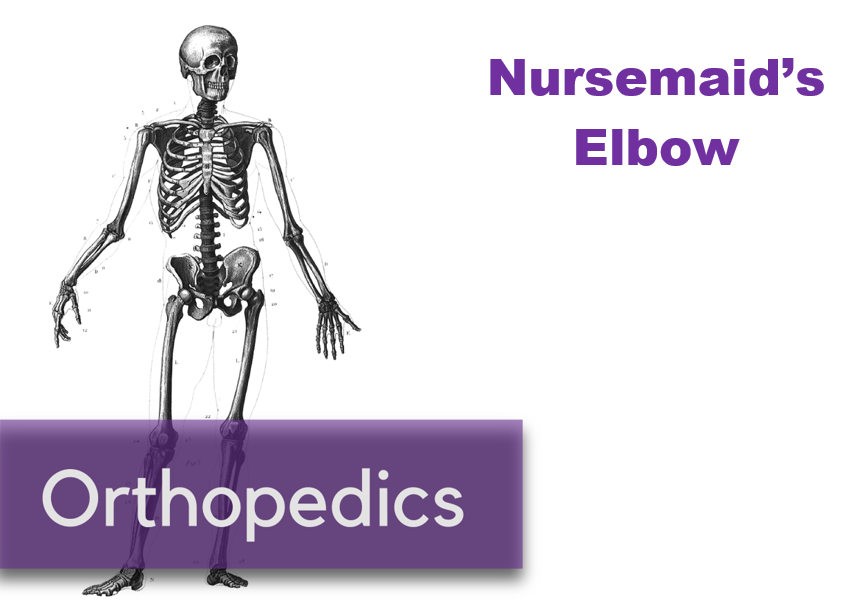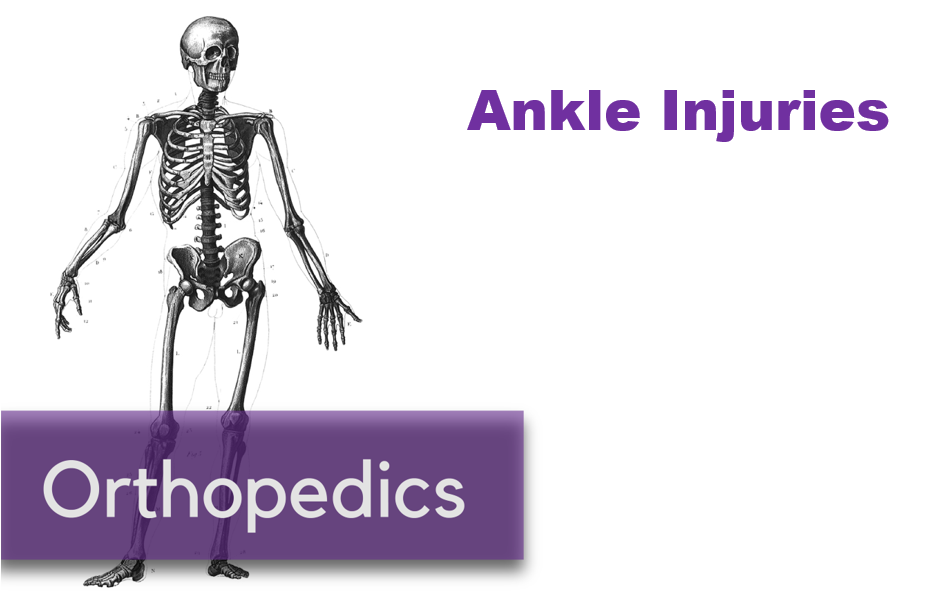Written by: Abiye Ibiebele, MD (NUEM PGY-1) Edited by: Jacob Stelter, MD, (NUEM PGY-3) Expert commentary by: Andrew Ketterer, MD
“With great power comes great responsibility.”
“That’s one small step for man, one giant leap for mankind.”
“Every emergency medicine physician should know three ways to reduce a shoulder, not including traction-countertraction.”
Now that last one may be not as well known as the other quotes, but it was a pearl passed along to me during my Sports Medicine rotation by my attending. The traction-countertraction method is often used due to physician familiarity and is considered the standard technique due to a high success rate [1,7] However, due to need for adequate sedation and the amount of force generated during the reduction, below we will examine five alternative methods of reduction for anterior shoulder dislocations.
Stimson Method
Figure 1: Stimson maneuver of shoulder reduction Image credit: http://img.medscapestatic.com/pi/meds/ckb/20/25520.png
- Have the patient lay prone on an elevated stretcher with the injured extremity hanging off the edge of the stretcher. [1]
- Apply traction by suspending 5 to 10 lbs of weight from the wrist. [1]
- Have the patient maintain this position for 20-30 mins. [1]
- If needed, manual traction can be added with external rotation to aid in reduction. [1]
- Success rate for the Stimson technique alone is about 28%. [3,4]
- Success rate improves when combined with scapular manipulation.
- Reasons for failure include discomfort in prolonged prone position and discontinuing the reduction with prolonged times which can reach over 20 mins. [4]
- Moderately painful, ~5.3 out of 10 on pain scale. [3]
Scapular Manipulation Method
Figure 2: Scapular Manipulation Technique. Adapted from Horn, A., & Ufberg, J. (2013), Management of Common Dislocations. In: Roberts and Hedges' Clinical Procedures in Emergency Medicine (6th ed.). Philadelphia, PA: Elsevier/Saunders.
- Place the patient in a prone position with the shoulder in 90 degrees of forward flexion and slight external rotation. [1,2]
- Apply traction to the shoulder as mentioned in the Stimson technique above. [1,2]
- As patient begins to relax, stabilize the superior aspect of the scapula with one hand, with the thumb on lateral border of scapula. [1,2]
- With other hand, push the inferior tip of scapula medially towards spine, while rotating superior aspect laterally with the first hand. [1,2]
- Some dorsal displacement of the tip of the scapula (lifting it) may be necessary as medial displacement is maximized. [1,2]
Variation: This technique can also be done in a seated position, with an assistant assisting applying traction on the affected arm and countertraction on ipsilateral clavicle. This is actually the preferred method by many, however this is a technically more difficult reduction [1].
- Success rate for the Stimson technique has ranged from ~90-97%. [2,3]
- Fast reduction, takes less than 5 minutes to perform. [2,3]
- Noted to be one of the least painful methods of reduction: a recent systematic review describes pain ~1.5 out of 10 during reduction. [3]
- There have not been any reported complications of this technique. [2,3]
External Rotation Method
Figure 3: External Rotation Technique. Adapted from Horn, A., & Ufberg, J. (2013), Management of Common Dislocations. In: Roberts and Hedges' Clinical Procedures in Emergency Medicine (6th ed.). Philadelphia, PA: Elsevier/Saunders.
- Have the patient lie supine on a stretcher and position yourself on the side of the affected arm. [1,5]
- Fully adduct the affected arm and flex the elbow to 90 degrees. [1,5]
- Place one hand on the wrist and another hand on the patient’s elbow. [1,5]
- Using the grasped wrist as a guide, slowly begin to externally rotate the patient’s arm. [1,5]
- Stop movement any time patient feels pain to allow the muscles to relax before resuming. [1,5]
- Reduction typically occurs between 70 and 110 degrees of external rotation. [6]
- If dislocation persists after full external rotation, you can apply steady gentle traction at the elbow, or slowly bring the arm back into internal rotation which can lead to reduction [1,6}.
- You can also proceed to the Milch technique from full external rotation (see below). [8]
- Success rate ranges from 81-91%. [3,6]
- Average time to reduction is around 3 mins but it can take up to 10 mins to perform. [3,6]
- Well tolerated by patients, ~ 3 out of 10 on pain scale. [3]
- No reported complications of this technique. [3,6]
Milch Technique
- Have the patient lie on a stretcher; the patient can be either supine or prone based on his or her comfort. [1,4,6]
- Have the patient abduct the affected arm to place their hand behind their head, if they are able, and then straighten the arm at the elbow. [1,6]
- If the patient cannot do this unassisted, then grab patient’s arm at either the elbow or the wrist and guide arm into full abduction. [1,4,6]
- With the arm fully abducted, apply gentle longitudinal traction and gentle external rotation to achieve reduction. [1,4,6]
- If reduction does not occur quickly, apply gentle cephalad pressure to the humeral head while continuing to hold traction. [1,4,6]
- If external rotation has already been attempted (see external rotation technique above), you can proceed to the Milch technique by abducting the arm in a wide arc from full external rotation, while applying gentle traction throughout. [8]
Figure 4: Milch Technique. Adapted from Horn, A., & Ufberg, J. (2013), Management of Common Dislocations. In Roberts and Hedges' Clinical Procedures in Emergency Medicine (6th ed.). Philadelphia, PA: Elsevier/Saunders.
- Success rate ranges from 70-95%. [1,6]
- On average, takes about 4-5 mins to perform. [3,4]
- Moderately painful, ~ 5.3 out of 10 on pain scale. [3,4]
- No reported complications of this technique. [3,4]
FARES Method (“FAst, REliable, Safe)
- Have the patient lie supine on the stretcher and stand on the affected side. [9]
- Apply gentle longitudinal traction on the arm and begin to bring the arm into abduction. [9]
- While abducting arm, oscillate the arm in an up and down fashion
- Oscillations should be brief (2-3 full cycles per second) and short (about 5 cm above/below midline). [9]
- After 90 degrees of abduction, continue oscillations and add gentle external rotation. [9]
- Reduction is usually achieved around 120 degrees of abduction. Afterwards gently internally rotate the arm to bring the forearm to lie across the patient’s chest. [9]
- A helpful demonstration video can be viewed here
- Success rate ranges from 88-95%. [9, 10]
- Reduction time: ~2-3 mins. [3,9,10]
- Well tolerated, pain 1-2 out of 10 on VAS scale. [3,9]
- No reported complication of this technique. [3.9]
So, the next time an anterior shoulder dislocation walks into the ER, go ahead and give one of these reduction techniques a try. No single reduction method is 100% successful, so it’s good to be facile in a variety of methods. Remember to obtain pre- and post-reduction films and assess neurovascular status before and after reduction [1]. Time to reduce some shoulders!
Expert Commentary
This is a very nice overview of some less brutal approaches to a common and sometimes difficult problem. The classic traction-countertraction techniques (e.g. the Hippocratic method, wherein the physician places a foot in the axilla of the patient’s affected arm and applies distal traction) tend to have higher complication rates, including axillary nerve injury, humeral neck and shaft fractures, and glenohumeral capsular damage. They also tend to be quite painful, usually necessitating procedural sedation, which of course carries its own risks.
In addition to the above, one method I have had great success with is the Cunningham technique: The patient is placed in a sitting position, with the affected arm completely adducted and the elbow flexed to 90 degrees. The physician supports the patient’s forearm with their own forearm, with the hand on the patient’s elbow, and applies very gentle downward traction – the weight supplied by the physician’s forearm is usually adequate. The physician sequentially massages the patient’s trapezius, deltoid, and biceps muscles until the humeral head reduces. This technique won’t usually cause a satisfying “clunk,” so you’ll need to check periodically to see whether the shoulder has been reduced. Resolution of the lateral shoulder step-off might be the only immediately visible sign of successful reduction.
[Video of Cunningham technique]
Often, I will combine this technique with the FARES method by oscillating the patient’s forearm up and down as I externally rotate their shoulder. This usually results in quick and nearly painless reduction and has an exceptionally low complication risk. In order for these techniques to work, the patient must be relaxed – as soon as you hit resistance or cause pain their muscles will tense up, so if this happens you need to pause and wait for them to feel better before continuing. A whiff of opioids can do wonders here, accomplishing both pain relief and anxiolysis.
The reasoning behind the various shoulder reduction techniques is that spasm of the biceps, trapezius, and deltoid muscles is keeping the humeral head out of the glenoid fossa. Fatiguing these muscles with traction or distracting the patient will allow you to mobilize the humeral head and get it back into the glenoid fossa. It’s worth noting that muscle spasm becomes increasingly hard to overcome the longer a patient is dislocated. This means that the FARES method and other distraction techniques are less likely to work if the patient has been dislocated for too long, and more painful fatigue techniques such as Stimson, Milch, or good old traction-countertraction may become necessary. Still, it’s good to have a number of tricks up your sleeve, and if one doesn’t work, you have plenty of others to choose from.
Andrew Ketterer, MD
Medical Education Fellow, Beth Israel Deaconess Emergency Medicine
[Peer-Reviewed, Web Publication] Ibiebele A, Stelter J (2018, May 21 ). A Recipe for Reduction: Five alternative approaches for reducing an anterior shoulder dislocation. [NUEM Blog. Expert Commentary by Ketterer, A]. Retrieved from http://www.nuemblog.com/blog/shoulder-reduction
References
1. Horn, A., & Ufberg, J. (2013), Management of Common Dislocations.In Roberts and Hedges' Clinical Procedures in Emergency Medicine (6th ed.). Philadelphia, PA: Elsevier/Saunders.
2. Anderson, D., Zvirbulis, R., & Ciullo, J. (1982). Scapular manipulation for reduction of anterior shoulder dislocations. Clinical orthopaedics and related research, 164, 181-183.
3. Alkaduhimi, H., van der Linde, J. A., Willigenburg, N. W., van Deurzen, D. F. P., & van den Bekerom, M. P. J. (2017). A systematic comparison of the closed shoulder reduction techniques. Archives of orthopaedic and trauma surgery, 137(5), 589-599.
4. Amar, E., Maman, E., Khashan, M., Kauffman, E., Rath, E., & Chechik, O. (2012). Milch versus Stimson technique for nonsedated reduction of anterior shoulder dislocation: a prospective randomized trial and analysis of factors affecting success. Journal of shoulder and elbow surgery, 21(11), 1443-1449.
5. Eachempati, K. K., Dua, A., Malhotra, R., Bhan, S., & Bera, J. R. (2004). The external rotation method for reduction of acute anterior dislocations and fracture-dislocations of the shoulder. JBJS, 86(11), 2431-2434.
6. Ufberg, J. W., Vilke, G. M., Chan, T. C., & Harrigan, R. A. (2004). Anterior shoulder dislocations: beyond traction-countertraction. The Journal of emergency medicine, 27(3), 301-306.
7. Ghane, M. R., Hoseini, S. H., Javadzadeh, H. R., Mahmoudi, S., & Saburi, A. (2014). Comparison between traction-countertraction and modified scapular manipulation for reduction of shoulder dislocation. Chinese Journal of Traumatology, 17(2), 93-98.
8. Hendey, G. W. (2016). Managing anterior shoulder dislocation. Annals of emergency medicine, 67(1), 76-80.
9. Sayegh, F. E., Kenanidis, E. I., Papavasiliou, K. A., Potoupnis, M. E., Kirkos, J. M., & Kapetanos, G. A. (2009). Reduction of acute anterior dislocations: a prospective randomized study comparing a new technique with the Hippocratic and Kocher methods. JBJS, 91(12), 2775-2782.
10. Maity, A., Roy, D. S., & Mondal, B. C. (2012). A prospective randomised clinical trial comparing FARES method with the Eachempati external rotation method for reduction of acute anterior dislocation of shoulder. Injury, 43(7), 1066-1070.













